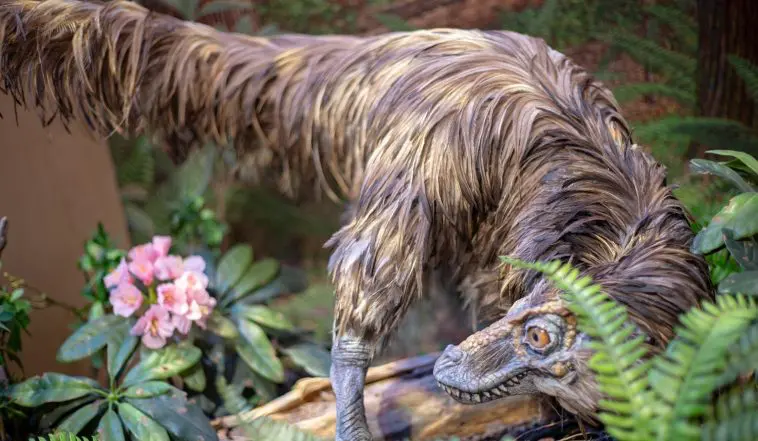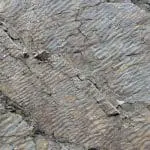[Originally published in 2013 as Riddle of the Feathered Dragons]
Dr. Alan Feduccia is a world-class evolutionary biologist whose research has focused on the natural history of birds. He is the S.K. Heninger Distinguished Professor Emeritus at The University of North Carolina, Chapel Hill, and even his abbreviated list of publications is the envy of most scientists. He has received numerous honors for his scientific accomplishments, including having an extinct species of bird named after him: Confuciusornis feducciai.
Despite his incredible scientific accomplishments, he is ridiculed by some in the scientific community because he doesn’t think that dinosaurs evolved into birds. There are those who call him a “BANDit” (BAND stands for “Birds Are Not Dinosaurs) and lump him in with the hated creationists and the global warming “deniers.”
Why don’t these people listen to a man who has contributed so much to the biological sciences? Because they follow the consensus, and the consensus is that birds evolved from dinosaurs. Anyone who questions this consensus, regardless of the data they present, are simply ignored and ridiculed.
In his book, Riddle of the Feathered Dragons, Dr. Feduccia has something to say about this consensus:
The word “consensus” has no place in science and is never a validation of any hypothesis, yet one frequently sees trust in “consensus” for validation of important scientific concepts. (pp. 4-5)
I couldn’t agree more. When you hear the word “consensus” used to support a scientific argument, you know the speaker has stopped thinking. Rather than examining evidence for himself or herself, the speaker is simply allowing the majority to rule. Majority rule might be a good system in some social applications, but it is the worst possible method for doing science.
While Dr. Feduccia does spend a few pages attacking the “herd mentality” that seems to be predominant in science, he spends most of his time laying out his case for why birds could not have evolved from dinosaurs.
Now don’t misunderstand. Dr. Feduccia is not claiming that birds didn’t evolve. He just thinks the latest fad that states they evolved from dinosaurs is indefensible based on the data. He suggests that birds probably evolved from an archosaur lineage, which is thought to have predated the dinosaurs. Thus, he thinks that dinosaurs and birds have a common ancestor, but he doesn’t think that dinosaurs are in the evolutionary line that produced birds.
I have written about some of his arguments before, so much of what is in the book was already familiar to me. However, there were some fascinating issues brought up in the book that I had never heard before. For example, those who believe that dinosaurs evolved into birds point to fossils that preserve a “fuzz” that coats large parts of the dinosaur. This “fuzz” is cited as evidence for “protofeathers” — skin structures that are taken to be the evolutionary forerunners of the feathers we see in birds today. It is thought that perhaps these “protofeathers” helped to keep the dinosaurs that sported them warm. Dr. Feduccia, however, makes a very strong argument against this kind of thinking:
It stretches credulity to imagine a small dinosaur coated permanently with a downy pelt, as downy feathers in birds represent a temporary integumentary coating, abandoned as quickly as possible. It is during that juvenile stage that birds are most vulnerable, both to predation and the vagaries of weather. Baby ostriches, for example, if soaked by rain, will become hypothermic and die if they cannot seek the shelter of their mother’s wings. (pp. 121-122)
If these “protofeathers” are supposed to have kept dinosaurs warm, how did the dinosaurs keep them dry?
Later on, he recounts something that took place at the 2004 Society of Avian Paleontology meeting in France. Since these “protofeathers” are supposed to be the evolutionary forerunners of modern feathers, he asked a simple question:
I asked the group, “What is the structural and/or biological evidence that the fibers discovered in the Chinese fossils are in any way related to feathers?” There was a pregnant silence, and it was apparent that no answer would be forthcoming. At last developmental biologist Paul Maderson stood up and emphatically proclaimed: “I can answer the question: There is no evidence!” It was noted that the only true answer was that “birds are living dinosaurs.” (p. 134, emphasis his)
Now once again, don’t misunderstand Dr. Feduccia’s position. He is no friend of creationists. Indeed, in the early pages of the book, he says that the “birds are living dinosaurs” dogma is so nonsensical that it is providing a lot of fodder for the creationists, and he doesn’t like that. However, he is experiencing what creationists, intelligent design advocates, and those who fight against the “consensus” in many other areas of science have experienced: His arguments are ignored, and the data he presents are discounted because his view is not a part of the current scientific dogma.
While the book is highly technical, it is well worth a read for anyone who is interested in the supposed evolution of birds. If nothing else, it will show you that the current “birds are living dinosaurs” view is not supported well by the evidence, and it will give you insight into how even a well-respected scientist can be ostracized when he or she decides to go against the scientific dogma of the day.






